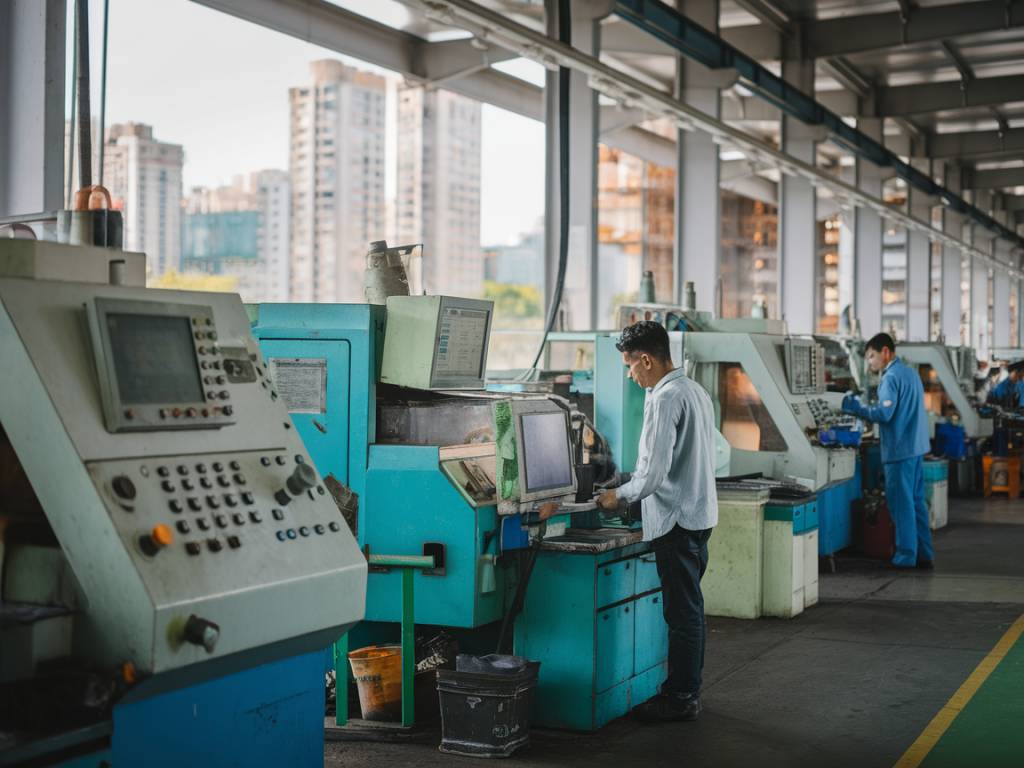The Resurgence of Manufacturing in the Digital Age and Its Impact on Jobs
Manufacturing has long been considered the backbone of economic growth, but its fortunes have ebbed and flowed with technological advancements and economic shifts. Over the past few decades, offshoring and automation have driven declines in traditional manufacturing jobs. However, the digital age is reshaping the industry, fostering a surprising resurgence in domestic manufacturing. The key drivers? Advanced automation, digital connectivity, and changing global dynamics. But what does this mean for jobs? Will this resurgence create new opportunities, or will further automation reduce the need for human labor?
The Digital Transformation of Manufacturing
The term “Industry 4.0” has become a buzzword in industrial circles. It refers to the integration of cutting-edge technologies such as artificial intelligence (AI), the Internet of Things (IoT), and robotics into manufacturing processes. These advances are making production more efficient, responsive, and localized.
- Automation and Robotics: Modern factories are increasingly relying on robotics and artificial intelligence to handle tasks that once required human precision. This has drastically improved efficiency but has also raised concerns about job displacement.
- 3D Printing: Also known as additive manufacturing, 3D printing has revolutionized prototyping and small-scale production. This enables companies to bring manufacturing closer to home, reducing reliance on global supply chains.
- IoT & Predictive Maintenance: Smart sensors now allow factories to predict machinery failures before they occur, reducing downtime and optimizing production cycles.
- Big Data and AI: Real-time data analytics enable manufacturers to optimize production in ways that were previously impossible, from predictive quality control to supply chain efficiency.
Reshoring and the New Face of Global Manufacturing
For years, companies sought the lowest-cost production centers, leading to significant job losses in Western economies. However, declining cost advantages in traditional offshoring destinations, coupled with digital capabilities, are driving a trend known as “reshoring.” Countries like the United States, Germany, and the United Kingdom are seeing renewed investment in domestic production.
What is driving this shift?
- Rising Labor Costs Overseas: Wages in countries like China have increased substantially, eroding the economic incentives of offshore manufacturing.
- Supply Chain Vulnerabilities: The COVID-19 pandemic highlighted weaknesses in extended global supply chains, prompting businesses to prioritize resilience over low-cost sourcing.
- Consumer Demand for Localization: Many consumers prefer products made domestically due to concerns around sustainability, ethics, and quality.
- Government Incentives: Various policies, from tax breaks to subsidies, are encouraging companies to invest in local production.
Impact on Jobs: A Double-Edged Sword?
The resurgence of manufacturing presents both opportunities and challenges for the labor market. While new manufacturing jobs are created, they are often different from traditional assembly-line positions.
The Positive Side
- Higher-Skilled Jobs: Modern manufacturing requires expertise in operating automated machinery, programming robots, and maintaining sophisticated production systems.
- Job Creation in Tech and Engineering: The rise in automation creates demand for software engineers, data analysts, and AI specialists.
- Local Economic Growth: Bringing jobs back to domestic shores increases investment in local communities, boosting related industries.
The Challenges
- Skills Mismatch: Many traditional factory workers lack the technical knowledge needed for modern manufacturing roles, requiring significant workforce retraining.
- Fewer Low-Skill Jobs: While automation enhances productivity, it reduces the number of roles available for workers without specialized training.
- Geographic Disparities: Manufacturing hubs tend to concentrate in specific regions, potentially leaving some communities without job opportunities.
Workforce Adaptation and the Future of Manufacturing Jobs
To fully capitalize on the resurgence of manufacturing, workforce development needs to keep pace with technological advancements. Businesses, governments, and educational institutions must collaborate to bridge the skills gap and prepare workers for the future.
Key Solutions
- Upskilling and Reskilling Programs: Public and private initiatives aimed at retraining workers in fields like robotics maintenance and programming will be essential.
- Stronger Educational Focus on STEM: Countries investing in STEM (Science, Technology, Engineering, and Mathematics) education are better positioned to supply workers for advanced manufacturing.
- Apprenticeships and Vocational Training: European models emphasizing apprenticeships show promise in training a new generation of high-skilled industrial workers.
- Flexible Work Models: As manufacturing embraces digitalization, remote monitoring roles and hybrid work setups may become more prevalent.
Final Thoughts
The resurgence of manufacturing in the digital age is reshaping global production dynamics and transforming the labor market. While automation and reshoring bring opportunities for higher-skilled jobs and local economic growth, they also pose challenges related to workforce adaptation and job polarization.
The key question remains: will policymakers, businesses, and workers move quickly enough to adapt? The industries that embrace digital transformation while investing in human capital will be the ones that thrive in this new era of manufacturing.
